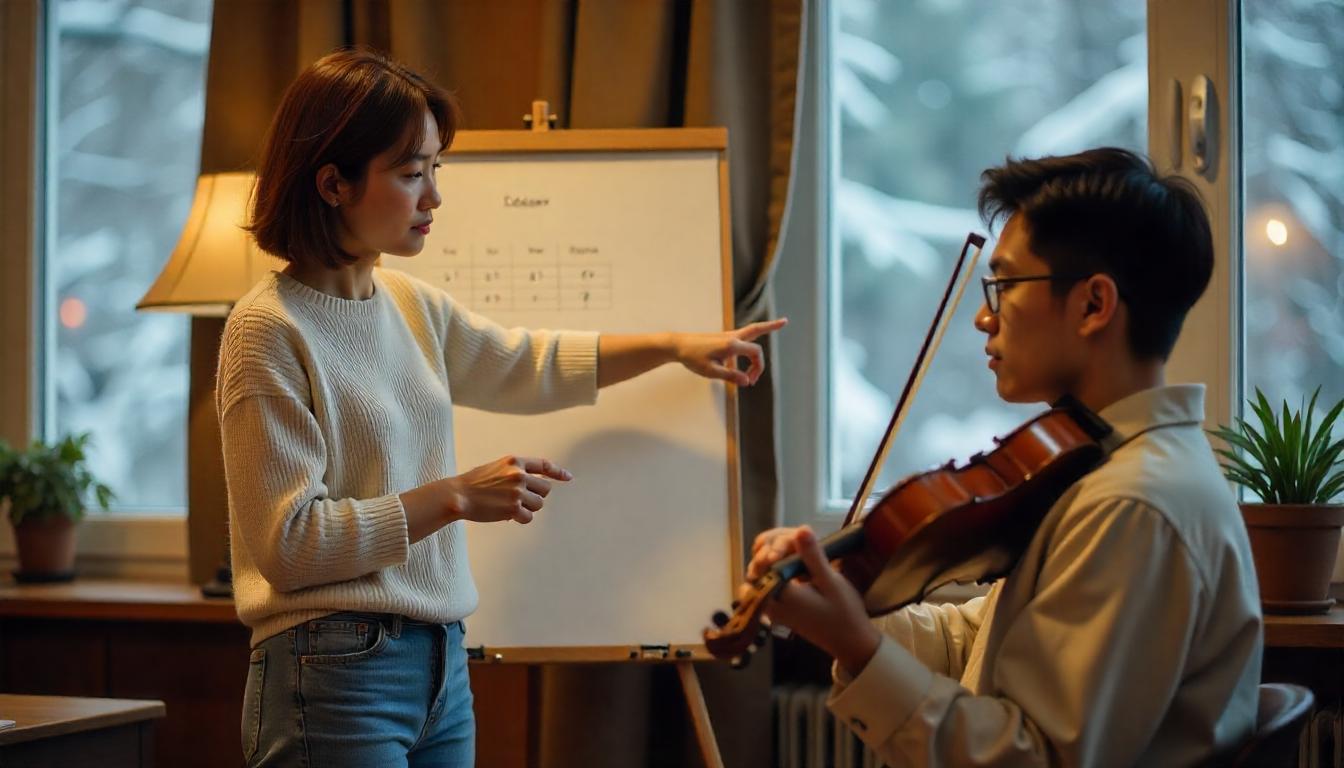When parents sign their child up for music lessons, it’s natural to focus on the 30 or 60 minutes they’ll spend with the teacher each week. But what many don’t realize is that a good teacher’s impact extends far beyond the classroom.
A great music teacher doesn’t just teach scales and songs—they guide the entire learning journey, offering support, structure, and motivation that carries into daily practice. Here’s a closer look at what a music teacher really does—both during lessons and throughout the week—to help your child grow into a confident and capable musician.
Inside the Classroom: Building the Foundation

- Individualized Lesson Planning
Every child learns differently. A skilled teacher takes the time to understand each student’s personality, pace, and goals. Some children respond better to visual cues; others thrive through repetition or storytelling. Lessons are adjusted to suit the child’s learning style, ensuring steady and meaningful progress.
- Correcting Technique in Real-Time
Small habits—such as hand tension, wrist position, or finger control—can be hard to spot at home. Teachers correct these subtle technical issues before they become bad habits. They also guide students through proper rhythm, phrasing, articulation, and dynamics to shape musical expression.
- Introducing Musical Concepts in Context
Rather than teaching theory in isolation, good teachers weave concepts like time signature, key changes, or musical form directly into the songs the child is learning. This helps students understand not just how to play, but why the music works the way it does.
- Setting Clear Weekly Goals
At the end of each lesson, the teacher outlines what the student should focus on during the week. This might include repeating a specific section, slowing down tempo, refining a technique, or reviewing a particular exercise. These small, achievable goals keep the student on track and motivated between lessons.
Outside the Classroom: Keeping Progress on Track

Music growth doesn’t happen during the lesson—it happens between lessons, during home practice. That’s why many teachers take an active role in supporting students throughout the week.
1. Practice Video Reviews
A growing number of teachers encourage students (especially beginners or younger children) to send short practice videos during the week. These are typically 1–3 minutes long and captured casually by parents on a smartphone.
Once the teacher receives the video, they:
- Watch the student’s playing for technical or musical issues
- Offer feedback through short voice notes, messages, or video replies
- Provide suggestions for improvement before the next lesson
This system keeps the student connected and allows the teacher to intervene early if a piece is being practiced incorrectly.
2. Progress Monitoring Between Lessons
By reviewing videos or keeping communication open, the teacher can:
- Adjust the upcoming lesson to focus on current challenges
- Recommend new warm-ups or practice strategies
- Track how much a student is practicing and how they’re applying what they’ve learned
This creates a feedback loop that bridges the gap between classroom instruction and home practice.
3. Personalized Adjustments
If a student is struggling with a section or getting bored with a piece, the teacher may modify the lesson plan during the week. This could mean introducing a new piece for variety, simplifying a tricky section, or temporarily shifting focus to a different skill (e.g., sight-reading or rhythm training).
Why This Matters
This kind of ongoing involvement makes a huge difference in how quickly and confidently a child progresses. Instead of simply showing up to a weekly class and starting fresh each time, the teacher is actively guiding the student’s momentum throughout the week.
It also builds a stronger connection between teacher and student. When students feel that their teacher is paying attention to their efforts—even outside class—they’re more likely to stay motivated, practice regularly, and take pride in their progress.
In Summary

A music teacher’s role extends far beyond the classroom. From tailoring lessons to guiding weekly goals and offering personalized feedback between sessions, the teacher becomes a steady source of structure and encouragement throughout the learning journey.
This consistent support—inside and outside of class—is what truly helps children grow, not only as musicians, but as focused and confident learners.




 Singapore
Singapore